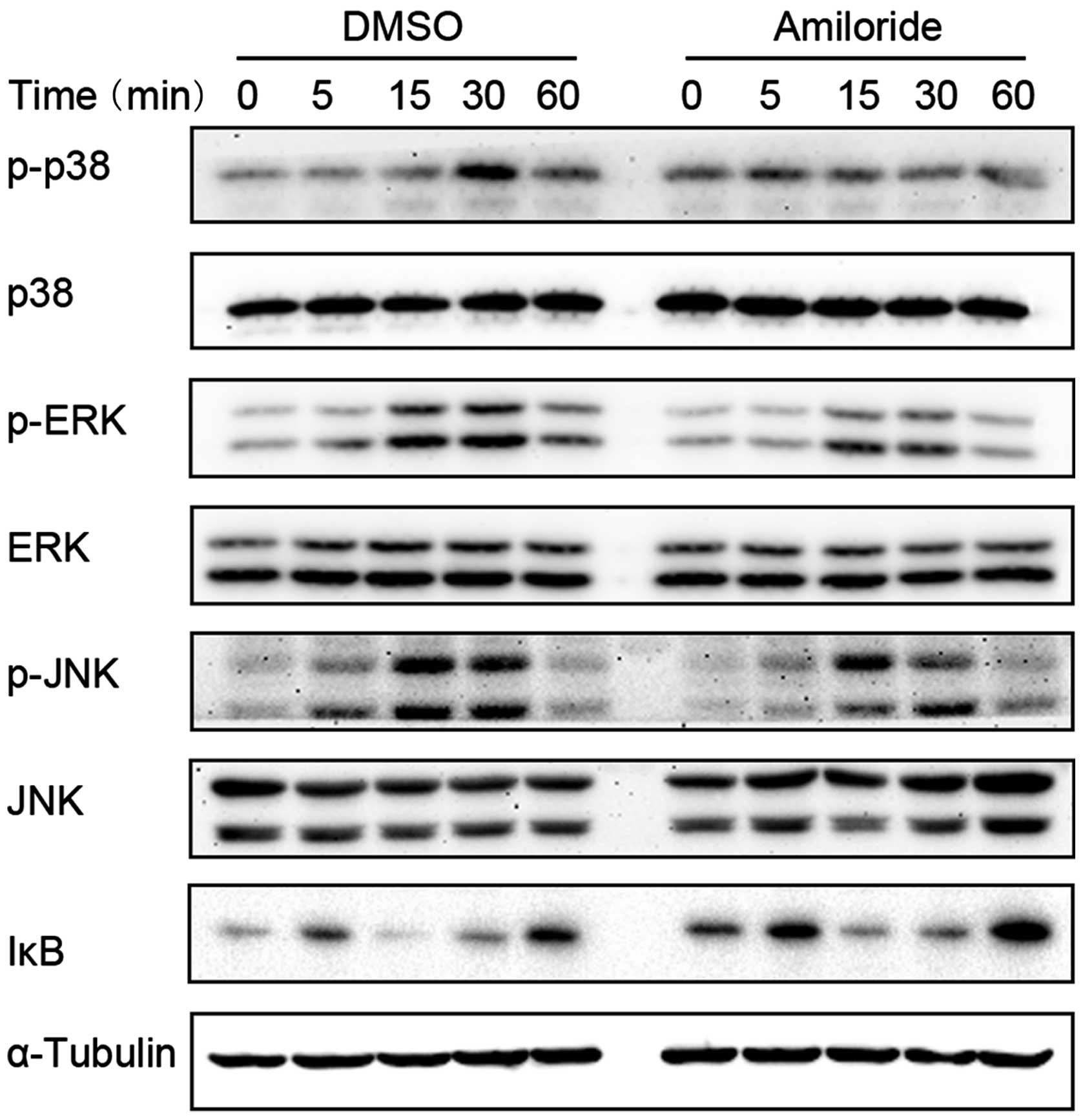|
1
|
Suda T, Takahashi N and Martin TJ:
Modulation of osteoclast differentiation. Endocr Rev. 13:66–80.
1992.PubMed/NCBI
|
|
2
|
Zaidi M: Skeletal remodeling in health and
disease. Nat Med. 13:791–801. 2007. View
Article : Google Scholar : PubMed/NCBI
|
|
3
|
Moon SJ, Ahn IE, Jung H, et al: Temporal
differential effects of proinflammatory cytokines on
osteoclastogenesis. Int J Mol Med. 31:769–777. 2013.PubMed/NCBI
|
|
4
|
Lippuner K, von Overbeck J, Perrelet R,
Bosshard H and Jaeger P: Incidence and direct medical costs of
hospitalizations due to osteoporotic fractures in Switzerland.
Osteoporos Int. 7:414–425. 1997. View Article : Google Scholar : PubMed/NCBI
|
|
5
|
Rodan GA and Martin TJ: Therapeutic
approaches to bone diseases. Science. 289:1508–1514. 2000.
View Article : Google Scholar : PubMed/NCBI
|
|
6
|
Suda T, Takahashi N, Udagawa N, Jimi E,
Gillespie MT and Martin TJ: Modulation of osteoclast
differentiation and function by the new members of the tumor
necrosis factor receptor and ligand families. Endocr Rev.
20:345–357. 1999. View Article : Google Scholar : PubMed/NCBI
|
|
7
|
Boyle WJ, Simonet WS and Lacey DL:
Osteoclast differentiation and activation. Nature. 423:337–342.
2003. View Article : Google Scholar : PubMed/NCBI
|
|
8
|
Takayanagi H, Kim S, Koga T, et al:
Induction and activation of the transcription factor NFATc1 (NFAT2)
integrate RANKL signaling in terminal differentiation of
osteoclasts. Dev Cell. 3:889–901. 2002. View Article : Google Scholar : PubMed/NCBI
|
|
9
|
Kim N, Takami M, Rho J, Josien R and Choi
Y: A novel member of the leukocyte receptor complex regulates
osteoclast differentiation. J Exp Med. 195:201–209. 2002.PubMed/NCBI
|
|
10
|
Teitelbaum SL and Ross FP: Genetic
regulation of osteoclast development and function. Nat Rev Genet.
4:638–649. 2003. View
Article : Google Scholar : PubMed/NCBI
|
|
11
|
Benos DJ: Amiloride: a molecular probe of
sodium transport in tissues and cells. Am J Physiol. 242:C131–C145.
1982.PubMed/NCBI
|
|
12
|
Cragoe EJ Jr, Woltersdorf OW Jr, Bicking
JB, Kwong SF and Jones JH: Pyrazine diuretics. II
N-amidino-3-amino-5-substituted 6-halopyrazinecarboxamides. J Med
Chem. 10:66–75. 1967. View Article : Google Scholar : PubMed/NCBI
|
|
13
|
Canessa CM, Schild L, Buell G, et al:
Amiloride-sensitive epithelial Na+ channel is made of
three homologous subunits. Nature. 367:463–467. 1994. View Article : Google Scholar : PubMed/NCBI
|
|
14
|
Kleyman TR and Cragoe EJ Jr: Amiloride and
its analogs as tools in the study of ion transport. J Membr Biol.
105:1–21. 1988. View Article : Google Scholar : PubMed/NCBI
|
|
15
|
Ugawa S, Ueda T, Ishida Y, Nishigaki M,
Shibata Y and Shimada S: Amiloride-blockable acid-sensing ion
channels are leading acid sensors expressed in human nociceptors. J
Clin Invest. 110:1185–1190. 2002. View Article : Google Scholar : PubMed/NCBI
|
|
16
|
Jahr H, van Driel M, van Osch GJ, Weinans
H and van Leeuwen JP: Identification of acid-sensing ion channels
in bone. Biochem Biophys Res Commun. 337:349–354. 2005. View Article : Google Scholar : PubMed/NCBI
|
|
17
|
Li X, Xu RS, Jiang DL, et al: Acid-sensing
ion channel 1a is involved in acid-induced osteoclastogenesis by
regulating activation of the transcription factor NFATc1. FEBS
Lett. 587:3236–3242. 2013. View Article : Google Scholar : PubMed/NCBI
|
|
18
|
Rousselle AV and Heymann D: Osteoclastic
acidification pathways during bone resorption. Bone. 30:533–540.
2002. View Article : Google Scholar : PubMed/NCBI
|
|
19
|
Li JP, Kajiya H, Okamoto F, Nakao A,
Iwamoto T and Okabe K: Three Na+/Ca2+
exchanger (NCX) variants are expressed in mouse osteoclasts and
mediate calcium transport during bone resorption. Endocrinology.
148:2116–2125. 2007. View Article : Google Scholar : PubMed/NCBI
|
|
20
|
Cuetara BL, Crotti TN, O’Donoghue AJ and
McHugh KP: Cloning and characterization of osteoclast precursors
from the RAW264.7 cell line. In Vitro Cell Dev Biol Anim.
42:182–188. 2006. View Article : Google Scholar : PubMed/NCBI
|
|
21
|
Wada T, Nakashima T, Hiroshi N and
Penninger JM: RANKL-RANK signaling in osteoclastogenesis and bone
disease. Trends Mol Med. 12:17–25. 2006. View Article : Google Scholar
|
|
22
|
Takayanagi H: Osteoimmunology: shared
mechanisms and crosstalk between the immune and bone systems. Nat
Rev Immunol. 7:292–304. 2007. View
Article : Google Scholar : PubMed/NCBI
|
|
23
|
Ghosh S and Karin M: Missing pieces in the
NF-kappaB puzzle. Cell. 109(Suppl): S81–S96. 2002. View Article : Google Scholar : PubMed/NCBI
|
|
24
|
Matsumoto M, Sudo T, Saito T, Osada H and
Tsujimoto M: Involvement of p38 mitogen-activated protein kinase
signaling pathway in osteoclastogenesis mediated by receptor
activator of NF-kappaB ligand (RANKL). J Biol Chem.
275:31155–31161. 2000. View Article : Google Scholar : PubMed/NCBI
|
|
25
|
Ikeda F, Matsubara T, Tsurukai T, Hata K,
Nishimura R and Yoneda T: JNK/c-Jun signaling mediates an
anti-apoptotic effect of RANKL in osteoclasts. J Bone Miner Res.
23:907–914. 2008. View Article : Google Scholar : PubMed/NCBI
|
|
26
|
Lee SE, Woo KM, Kim SY, et al: The
phosphatidylinositol 3-kinase, p38 and extracellular
signal-regulated kinase pathways are involved in osteoclast
differentiation. Bone. 30:71–77. 2002. View Article : Google Scholar : PubMed/NCBI
|
|
27
|
Asagiri M and Takayanagi H: The molecular
understanding of osteoclast differentiation. Bone. 40:251–264.
2007. View Article : Google Scholar
|














